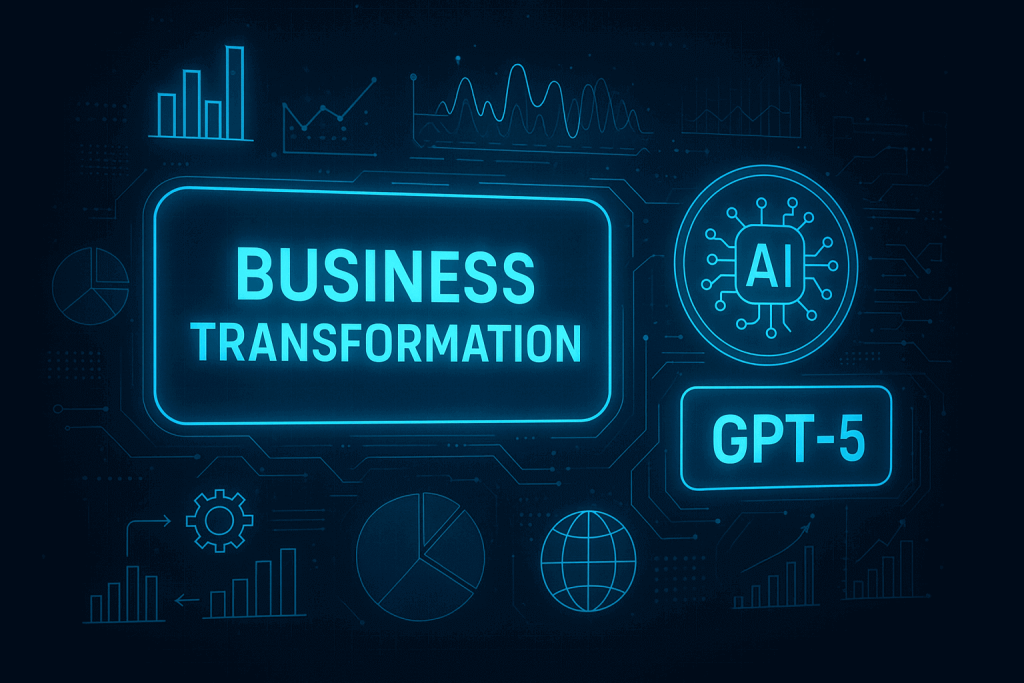I’ll admit, the last time I tried to predict technology (circa middle school), I thought hoverboards would be the next big thing by 2010. Instead? Selfies and AI that guess my shopping needs. This post is my attempt to grapple with a world moving faster than my morning coffee brews. Here’s a glimpse into how AI is taking us hurtling into territory few of us can name, let alone map.
Vanishing Boundaries: When AI Listens, Learns, and Shops for You
Sometimes I catch myself wondering what the world will look like in fifty years. Then, almost immediately, I realize there’s just no way to make that kind of prediction (0.00-0.06). The pace of change, especially in AI, is so fast that even imagining the near future feels like a guessing game. Still, it’s hard not to speculate—especially when I think about how AI in daily life is already reshaping the boundaries between what we do, what we want, and what simply happens for us.
Let’s start with a scenario that feels both surreal and strangely inevitable. Imagine I’m chatting with a friend, and I say, “I really love that shirt.” My AI assistant, always quietly listening (with my permission, of course), picks up on this. It knows I could use a new shirt. Instantly, it reaches out to my friend’s AI, asks where the shirt came from, and—without me lifting a finger—a package arrives at my door the next day (0.08-0.20). No searching, no shopping, no targeted ads. Just a seamless fulfillment of a passing desire.
This isn’t just a wild guess. It’s a logical extension of where exponential tech is heading. Research shows that AI’s progress is outpacing our ability to adapt, and it’s not just about faster computers or smarter chatbots. It’s about the entire structure of everyday consumer experiences being quietly rewritten.
AI Future Predictions: The End of Classic Advertising?
If AI can anticipate what I want before I even realize it, what happens to advertising? The answer, according to some, is pretty stark:
“Advertising will get crushed. The future belongs to chatting with your trusted agent and your trusted agent making good suggestions for you.”
(0.20-0.24)
It’s not hard to see why. Traditional ads are built on grabbing attention, nudging us toward products, and hoping we’ll bite. But if my digital assistant already knows my preferences, habits, and needs—if it’s actively shopping on my behalf—why would I ever need to see an ad? The trusted agent model flips everything. Instead of companies fighting for my attention, my AI filters the noise, only surfacing options that genuinely fit me. It’s a subtle, but seismic, shift.
- Personalized fulfillment: AI listens, learns, and acts on ambient conversation, not just explicit requests.
- Obsolete advertising: The middleman role of ads could disappear, replaced by direct, AI-driven recommendations.
- Consumer empowerment: I don’t have to wade through choices or marketing—my agent does it for me, based on real needs.
Of course, there’s a lot to unpack here. Privacy, trust, and consent become even more important when AI is this proactive. But the underlying trend is clear: the boundaries between thinking, wanting, and having are vanishing.
Exponential Tech: When “Normal” Changes Every Week
What really makes all this possible is the speed of AI development. I remember coming back from a week at Stanford and feeling like the world had shifted in just a few days. The new Gemini model from Google had just been released. In only two weeks, it was generating code that was noticeably better than before (1.44-1.55). That kind of leap used to take years, not days.
It’s not just Gemini. Every week, there’s a new breakthrough, a new tool, or a new capability. It’s dizzying. One moment, I’m getting used to a new feature; the next, it’s already outdated. Studies indicate that this rapid pace is making it harder for people—and even institutions—to keep up. Regulatory frameworks, for example, are struggling to adapt. The only way to write laws fast enough might be with the help of AI itself (0.37-0.45).
So, when I think about AI future predictions, I don’t just see smarter machines. I see a world where the very idea of “normal” is constantly shifting. AI in daily life isn’t just about convenience—it’s about living in a reality where the boundaries between desire and fulfillment, between suggestion and action, are almost gone.
Maybe it sounds far-fetched. But with exponential tech, what seems impossible today can become mundane tomorrow. That’s the real moonshot: a future where AI listens, learns, and shops for us—before we even know what we want.
AI in the Classroom: Learning at Warp Speed or Cheating the System?
I’ve been following the rise of AI in education for a while now, and it’s finally hitting a tipping point. Not long ago, China made headlines by mandating artificial intelligence classroom training in all primary and secondary schools (2.13-2.24). Estonia’s doing the same. I’ve tweeted about this before, almost out of disbelief—these countries are moving fast, embedding AI as a core part of their national computer science curriculum. Meanwhile, in the U.S., we’re just starting to see executive orders nudging schools to incorporate AI-driven learning (3.31-3.40). It feels overdue.
But what does this actually look like in practice? Are we talking about a revolution in how kids learn, or just another layer of tech hype? I keep hearing the same refrain: disruption is coming to education, and it’s coming fast (3.44-3.47). The traditional school structure—fixed schedules, standardized tests, lectures—just isn’t built for the pace of AI-driven self-learning. And yet, most schools have underreacted so far.
Mandates and Momentum: Who’s Leading?
China and Estonia aren’t just experimenting. They’re requiring AI education for all students, treating it as essential as math or reading. In the U.S., policy is still emerging. There’s movement, but it’s slow. MIT and Northeastern now allow open AI use, but many K-12 schools are still wary. The debate is real: Should AI be a standard classroom tool, or is it a shortcut that undermines learning?
AI Tutors: Faster, Smarter, More Personalized
Here’s where things get interesting. Research shows that AI-driven learning can help students learn at least twice as fast—sometimes even four times faster—than traditional classroom methods. As one expert put it:
“When you’re using an AI to learn, you learn at least twice as fast…between 2x and 4x faster.”
(5.27-5.28)
That’s not just a small improvement. It’s a leap. AI tutors can already outperform teaching assistants in college classes (4.16-4.19). If I think back to my own high school teachers—some were great, but AI is poised to surpass them as a learning tool. In some ways, it probably already has.
The Homework Dilemma: Tool or Temptation?
Of course, there’s a catch. In my own experience, and from what I hear from other parents, kids are using AI for homework—even when they’re not supposed to (5.08-5.12). Teachers can still spot when an essay is too sophisticated for a middle schooler, but that gap is closing. The question is: Should students be allowed to use AI for everyday assignments, or should it be reserved for special projects? There’s no easy answer. Some argue that banning AI just pushes it underground, while others worry it gives an unfair advantage.
Economic Impact: More Than Just Grades
There’s another angle that’s hard to ignore. Studies indicate that exposure to AI in education doesn’t just boost learning speed—it can also increase future wage potential. For example, a single computer science class can raise a student’s future wages by 8% (6.49-6.51). That’s a measurable, real-world impact. It’s no wonder that over 250 U.S. CEOs have signed an open letter urging states to make AI and computer science a graduation requirement (6.38-6.44). The labor market is shifting, and students who miss out on these skills could hit a wall when they graduate (7.07-7.12).
Old Structures, New Realities
All of this raises tough questions about the future of the artificial intelligence classroom. The internet once sparked fears that putting courseware online would make schools obsolete. That didn’t happen—students kept coming, for the social experience and the credentials (4.33-4.49). But AI is different. It’s interactive, adaptive, and can explain concepts better than a lecture. The gap between what schools offer and what AI can deliver is only going to widen.
So, we’re left with a system in flux. Some schools are racing ahead, others are holding back. Students, meanwhile, are already experimenting—sometimes bending the rules, sometimes breaking them. The genie is out of the bottle, and the next few years will show just how much AI in education will reshape what we thought was unchangeable.
AI Writes the Rules: Moonshots in Government and Policy
When I look at the future of government, it’s hard not to be struck by what’s happening in the United Arab Emirates. The UAE has always been quick to experiment with technology, but its latest move—using AI to draft laws and shape policy—feels like a true moonshot. They’re not just talking about AI policy making or AI lawmaking as distant possibilities. They’re actually doing it, and the results are already turning heads.
According to official projections, the UAE’s AI-driven lawmaking initiative is set to reduce government costs by 50% and speed up the process of creating new laws by 70% (8.22-8.36). That’s not a typo. Half the cost, and nearly double the pace. But when I talk to people who follow AI government efficiency closely, there’s a sense that these numbers might actually be conservative. Some experts believe the real-world impact could be five times greater—imagine lawmaking that’s 5x faster, and cost savings that go even deeper (8.51-8.57).
It’s easy to see why. AI doesn’t just process information quickly; it can analyze, cross-reference, and synthesize vast amounts of legal and regulatory data in ways that would overwhelm any human team. As one observer put it,
‘The only way those laws are going to be written is with AI because nothing can keep up with AI other than AI.’
(11.16-11.22). That’s not just a clever line—it’s a reality check. The pace of technological innovation is so fast that traditional policy-making methods can’t keep up. If we want policies and regulations that actually match the speed of change, AI regulation tools are not just helpful—they’re essential.
But the story doesn’t end with faster, cheaper lawmaking. The real promise of AI in government is its ability to untangle the mess of overlapping, conflicting, and outdated regulations that have built up over decades. If you’ve ever tried to navigate the tax code or figure out which rules apply to a new business, you know how complicated things can get. In many industries, from healthcare to hair salons, there are layers of laws that contradict each other or simply don’t make sense anymore (11.27-11.39).
Now, imagine running all those laws through an AI system and asking it to find the conflicts, suggest simplifications, and even propose a new, streamlined set of rules that still achieves the same policy goals. That’s not science fiction—it’s already starting to happen. There are companies using AI to help nuclear projects find the fastest regulatory approval path, and the next steps could include optimizing entire legal frameworks and rewriting legislative foundations from scratch (12.13-13.08).
Of course, there are challenges. Not every country is ready to embrace this level of change. Many governments are still at the stage of “trying to spell AI,” as one expert joked (8.43-8.46). There are also deep questions about transparency, accountability, and the role of human judgment in policy making. But the direction of travel is clear. Research shows that AI could create more efficient, responsive, and less costly government processes—faster than most predictions suggest.
What excites me most is the potential for greenfield innovation. It’s not just about cutting costs or speeding up what already exists. It’s about reimagining what government can do when it’s no longer bogged down by bureaucracy and outdated systems. When policy can keep up with technology, when regulations can be rewritten in real time, and when the public sector can finally move at the speed of the private sector—well, that’s when the real moonshots begin.
The UAE’s experiment is just the start. As AI lawmaking and AI policy making become more mainstream, we may see a fundamental shift in how societies are governed. The rules themselves could become living documents, constantly updated and improved by intelligent systems. For anyone who’s ever felt frustrated by slow, inefficient, or contradictory government processes, that’s a future worth watching—and maybe even rooting for.
TL;DR: AI isn’t just faster—it’s accelerating change across education and governance in ways we’re barely able to track. From AI-powered classrooms to governments letting algorithms write laws, the only predictable thing is unpredictability.





